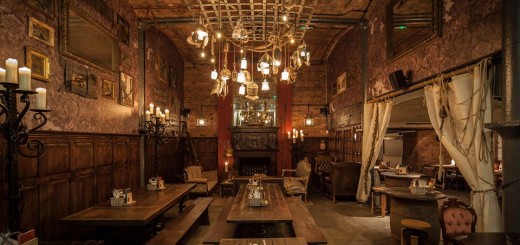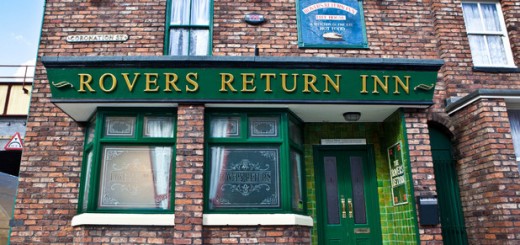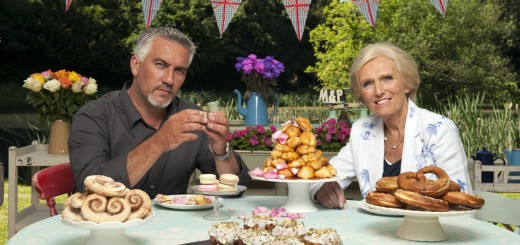10 Amazing Facts About the Queen’s Guards
The Queen’s Guards, also known as the Queen’s Life Guards, are the soldiers who are responsible for guarding the official royal residences of the United Kingdom. But what do we actually know about them? Well, we’re about to find out a whole lot more, as here are 10 amazing facts about the Queen’s Guards.
1. The Queen’s Guard Regiments

image via www.dailymail.co.uk
The Queens Guards are usually stationed from one of the five following regiments of foot guards:
• Grenadier Guards
• Scots Guards
• Irish Guards
• Welsh Guards
• Coldstream Guards
A Commonwealth unit can also provide a guard, and there has been occasions where the Royal Marines, RAF Regiment and the Gurkhas have provided a guard. Only one Commonwealth country of which the Queen is not head of state has sent a unit: the 1st Battalion Royal Malay Regiment.
2. Operational Soldiers

image via www.pxleyes.com
Many people believe the Queen’s Guards are entirely ceremonial, but that is not the case. All of the sentries are fully operational, and have functioning firearms and live ammunition. The Queen’s Guards can be found in royal residences, such as Buckingham Palace, St James’s Palace, the Tower of London, Windsor Castle and the Queen’s official residence, the Palace of Holyroodhouse in Edinburgh.
3. The Start of the Queen’s Guard

image via rosehilltravel.com
The Queen’s Guards have been responsible for protecting the sovereign and the royal palaces since the reign of King Charles II in 1600.
4. Buckingham Palace Fence

image via www.pu.nl
Up until 1959, the sentries were stationed outside the fence of Buckingham Palace. Their station was, however, moved after a guardsman kicked a tourist on her ankle as he marched. As a result, the tourist made a complaint to the police, and so the sentry was sent to barracks for 10 days. Since then, the sentries have been stationed inside the fence.
5. Michael Fagan

image via www.telegraph.co.uk
The Queen’s Guards primary role is to protect the Sovereign. However, there has been a few security incidents over the years. In 1982, Michael Fagan was able to avoid the sentries and even made his way as far as the Queen’s bedroom. He was eventually caught by the police.
6. Queen’s Guard Duties

image via blogd.com
The Queens Guards will be at their post for two hours. The guard will stand to attention every 10 minutes, slope his arms and perform a march of 15 paces across the area of the post. Each and every sentry will perform this action four to five times before they can come to a halt. The guard will then shoulder arms and stand at ease. The sentry can also not eat, sleep, smoke, sit, stand easy or lie down during their tour of duty.
7. Queen’s Guard Protocol

image via www.huffingtonpost.co.uk
The Queen’s Guard is often a magnet for nuisance tourists attempting to stop the Queen’s Guard from performing his duties. The Queen’s Guard follows a strict protocol that requires them to stamp their feet – also known as coming to attention sharply – if they are threatened or annoyed by a member of the public. He can also shout loudly: “stand back from the guard”.
If a member of the public continues to trouble the guard, he will repeat the stamp and shout again. Should the annoyance or threat continue, the sentry will assume the “port arms” position when pointing his rifle at the person. If the warnings to do not deter a person, the Queen’s Guard can either detain the person or can press the button in his sentry box for assistance.
Should a person ever step in front of a sentry during a march, he will shout: “Make way for the Queen’s Guard” – or Castle/Tower of London/Windsor Castle guard.
8. Women and the Queen’s Guard

image via www.dailymail.co.uk
Women are not permitted to serve in the British Armed Forces combat units, which includes the cavalry or infantry. It is for this reason you are highly unlikely to see a female sentry at a royal residence. However, women are permitted to serve in combat support units, such as engineers, artillery, air support and logistic support.
Back in April 2007, the first serving British Army women served on detachments of the Queen’s Guard. The King’s Troop and Royal Horse Artillery took over the guard at Windsor Castle, as the Army Air Corps took on public duties in London.
9. The Changing of the Queen’s Guard

image via www.changing-the-guard.com
When the time comes for the changing of the Queen’s Guard, the Old Guard will form on the north side of the enclosure on the Horse Guards Parade and the New Guard on the south side. As a New Guard arrives for duty, each Guard will carry the Standard and the Trumpeters of both the Old and New Guards, and will sound the Royal Salute on the arrival of the New Guard and the departure of the Old Guard.
Once the Guards form in the enclosure, the Corporal Major, Senior NCO and the sentries of the first relief of the New Guard will leave for the Guard Room, which is then handed over. The Old Guard sentries rejoin the remainder of the Old Guard once relieved of their duties, and will be stationed on the north side of the enclosure. The Trumpeters and Standard will only be on parade with a Long Guard. Yes, we’re a little confused, too!
10. The Queen’s Guardsmen Clothes

image via nypost.com
The Queens Guards are all required to wear full dress, but you can spot a guard’s regiment by their clothing. Each guard will wear a different plume and badge, and their tunic buttons have a unique spacing.












1 Response
[…] According to Heart Britain: […]